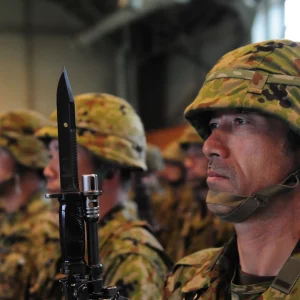A magnitude of 7.0 on the Richter scale and reports count over 200,000 casualties—Haiti’s 2010 earthquake was one of the first natural disasters that received widespread attention for its devastating impacts on the nation’s people and infrastructure and detrimental impacts of international disaster relief. The United Nations aid programs that reached the nation led to direct transmission of cholera, via infected peacekeepers that led to even higher death tolls in the nation. While these accidental impacts of humanitarian efforts are a testimony to their dangerous potentials, we often overlook the implication of power and control that international disaster relief entails. With recent developments of climate-change-related disasters currently taking the Philippines and Carolinas by storm, we must reevaluate the relevance and dangers of international disaster relief policy, especially to developing nations’ sovereignty and their autonomy in both disaster relief and post-disaster development.
The United States is by no means a big spender on humanitarian aid as compared to its military; however, it still spent a sizable amount in Haiti back in 2010 and has been keen on doing so in other nations of interest. State Department estimates of U.S. AID spending to the island nation total to nearly $3.4 billion, but according to the U.S. Government Accountability Office, they had only spent a third of those funds to assist the affected peoples and infrastructure. The motivation to make a power play is apparent in this scenario. Haiti’s history is tumultuous, especially considering its political history with ex-President Jean-Bertrand Aristide and the U.S. deposing its rulers to keep their American-endorsed dictator in power. A former resource-rich developing state and later political satellite, the small island has been in the eyes of the American sphere of influence for a century. This act of endorsing large sums of reconstruction, that in the end had substantially less pay-off leaving Haiti as the poorest country in the Western hemisphere, is another attempt of using natural disaster relief to boost publicity and national support for foreign intervention.
While it seems that the American viewpoint is purely humanitarian, their intervention in Haiti is a case study of how nations use their soft power to control the regions that they see as most integral to their foreign policy. The American manipulation of disaster relief in another nation of prominent U.S. interest—the Philippines—has gained more recent attention due to tropical storms. The Philippines has long served as a battleground for a power struggle in the Southeast Asian seaboard, and due to the most recent storm Typhoon Mangkhut, it is bound to receive international attention and immediate responses in the form of Trojan-horses from America and its geopolitical rivals.
The first scheme underway to exploit a disaster-prone nation like the Philippines is military control. According to Philippine Research organization IBON, the United States implemented $3.84 million for Disaster Prevention and Preparedness and the Enhanced Defense Cooperation Agreement (EDCA). This controversial proposition allows for the United States to move in troops and military-grade equipment under the notion that it would be essential for implementing humanitarian aid. The Americans have their own Trojan horse: a very loosely-defined “enhanced defense.” EDCA, which has been justified by the enhanced defense doctrine, is one of the many ways in which the soft power of disaster relief blurs the line and can instantaneously be a symbol of hard power through military involvement. However, the policy is not necessarily reminiscent of former U.S. colonialism according to Professor Darren Zook of International Area Studies and Political Science at UC Berkeley.
“Enhanced Defense is even divisive in the Philippines, because part of this is about the war on terror, and there remains multiple insurgencies occurring in the Philippines,” Zook said. “So some definitely see it as necessary protection, whereas others do see it more as a neocolonial, ‘we’re gonna have to do it for you.”
Hard power, however, is not restricted to the military and can be channeled in forms of economic domination that China, one of America’s key rivals, is utilizing to the full extent in the Southeast Asian Seaboard to augment their range of control.
The Philippines Star reported in April 2018 that China had pledged about $7.3 million in foreign direct investment (FDI) as part of the ambitious goal of providing Rodrigo Duterte’s government with $24 billion as part of FDI. To understand the nature of this assistance and interest, we must look at what China’s FDI has meant in the past especially in the context of nations that suffer from frequent natural disasters and require post-disaster infrastructure. Sri Lanka is a case example of an island nation with frequent flooding and had to recover from a relatively devastating amount of damage in the 2004 tsunami. Chinese FDI in the nation boomed following 2004, as an attempt to get building projects underway in Colombo, but increased escalation of the devastating civil war put the large-scale project on hold. It has recently been back up in business according to the Guardian where President Xi Jinping’s Belt and Road initiative has lead to a $1.4 billion investment in a future port city remodeling. Concerns over breaching Sri Lanka’s sovereignty have been brought up by Sri Lankan agencies, however. Part of the port development includes an upgrade of harbors including the Hambantota harbor, which according to the New York Times, bore “intelligence and strategic possibilities” that were part of the initial Sri Lankan and Chinese negotiations and has trapped Sri Lanka in further debt. The underlying political tendencies for these economic post-disaster ventures is similarly apparent with China’s Trojan horse of a substantial $24 billion pledge to the Philippines.
“This is China’s style, they’re going to try debt trap in the Philippines because they know that the Philippines has close ties to the U.S.,” Zook said. “And they would want the Philippines to say ‘no’ to the U.S. and ‘yes’ to China. It’s a geopolitical battleground because having the Philippines on their side would give China the edge in ASEAN and regional politics.”
Ensnaring the Philippines in the debt trap can be a key resource the Chinese need to continue expanding their economic interests via infrastructure projects. With the Philippines being unable to repay such a massive loan, China will use the Philippines as a point to export capital according to The Diplomat. The heightened loan ceiling will allow for the Chinese to expand their economic endeavors in the South China Sea with little payoff returning for the Philippines.
“China’s style is to offer these really enticing packages and then to follow up in ways that before you know it countries are indebted to China and China uses that as leverage against what that country can’t or can do,” Zook said.
It is a cycle of destruction, development and continued debt for these growing South Asian and Southeast Asian countries as global powers such as America and China abuse investment to build debt and further expand their economic and military prowess. Typhoon Mangkhut is very likely to be yet another opportunity for these nations to expand their power potential.
“China doesn’t like helping for the sake of helping, if the way its approached is natural disaster relief, then the Philippines might need that, but if there is enough awareness among Duterte and the Filipino people, then they might be more cautious and see that natural disaster relief and development post-disaster is not an open offer,” Zook said. “But the Philippines has a track record of self-help, they are not a country waiting for help.”
President Rodrigo Duterte of the Philippines has stated that he does not plan on receiving international support after assessing the initial damage of the storm and reported death tolls, which have risen to 70 people according to The Guardian. However, this notion of national independence in the country’s dealings with natural disaster has not been the truth as bold as Duterte’s statement seems.
“Disaster relief is always more than disaster relief depending on how it’s packaged, but it would be a shame to the Philippines if Duterte bought into the debt dependency that is facilitating the One Belt one road initiative since the Philippines has done a lot to fight for its autonomy, but it is much more likely to happen under Duterte,” Zook argued.
The potency for the Trojan horses that have been gifted to the archipelago to bring the nation into a cycle of debt and dependency on the Americans and Chinese is dangerous because while it remains far from neocolonialism, a cycle of aid dependency from natural disasters would be detrimental to the autonomous decision- making of the people of the developing Southeast Asian nation.
Pursuing disaster relief and post-disaster development in a manner that aligns with national interest without leaving developing nations vulnerable to the ulterior motives of powerful global leaders would be a step forward in ensuring that disaster relief is serving its true purpose: recovery and resilience. And while the best approach to implement relief continues to be debated, as long as we confine ourselves to the mentality that natural disaster relief remains free of ulterior geopolitical motives, we will continue to be blindsided by the sheer force of domination that global powers are exploiting in developing nations’ tragedies.
Featured Image Source: Wikimedia Commons






Be First to Comment